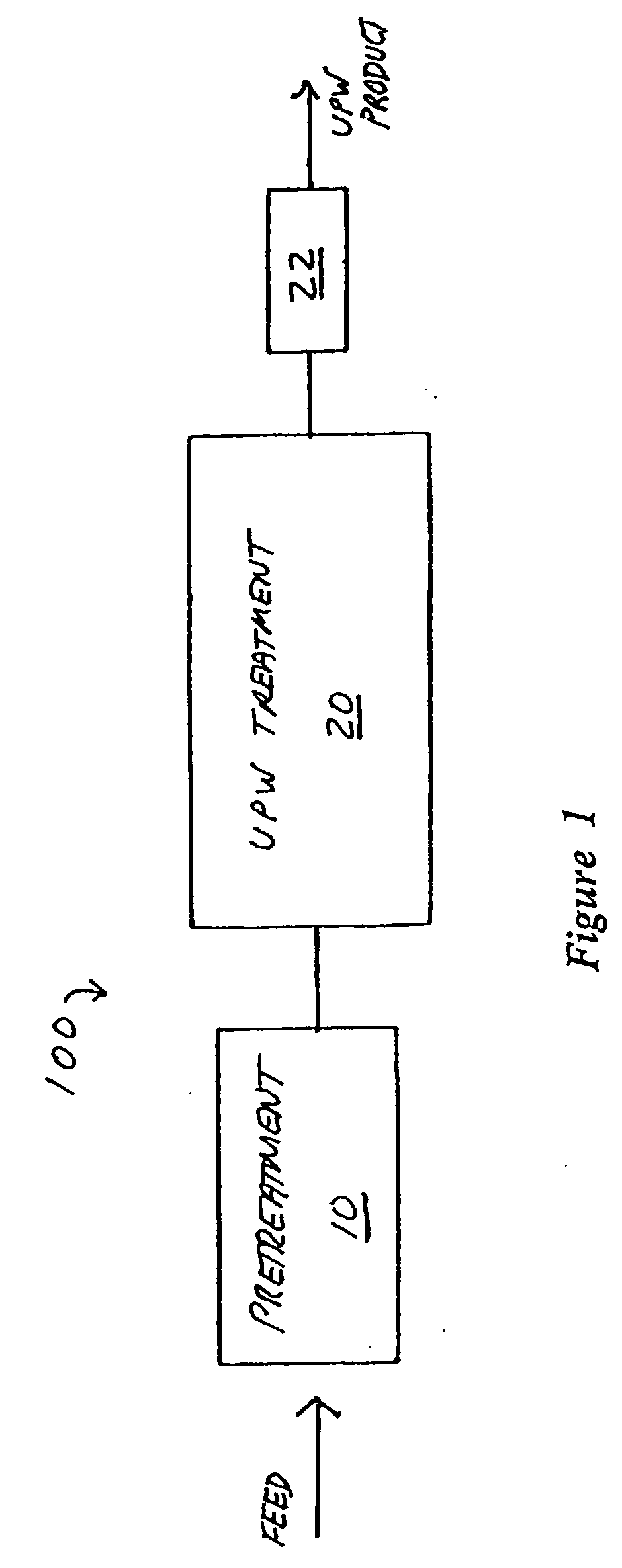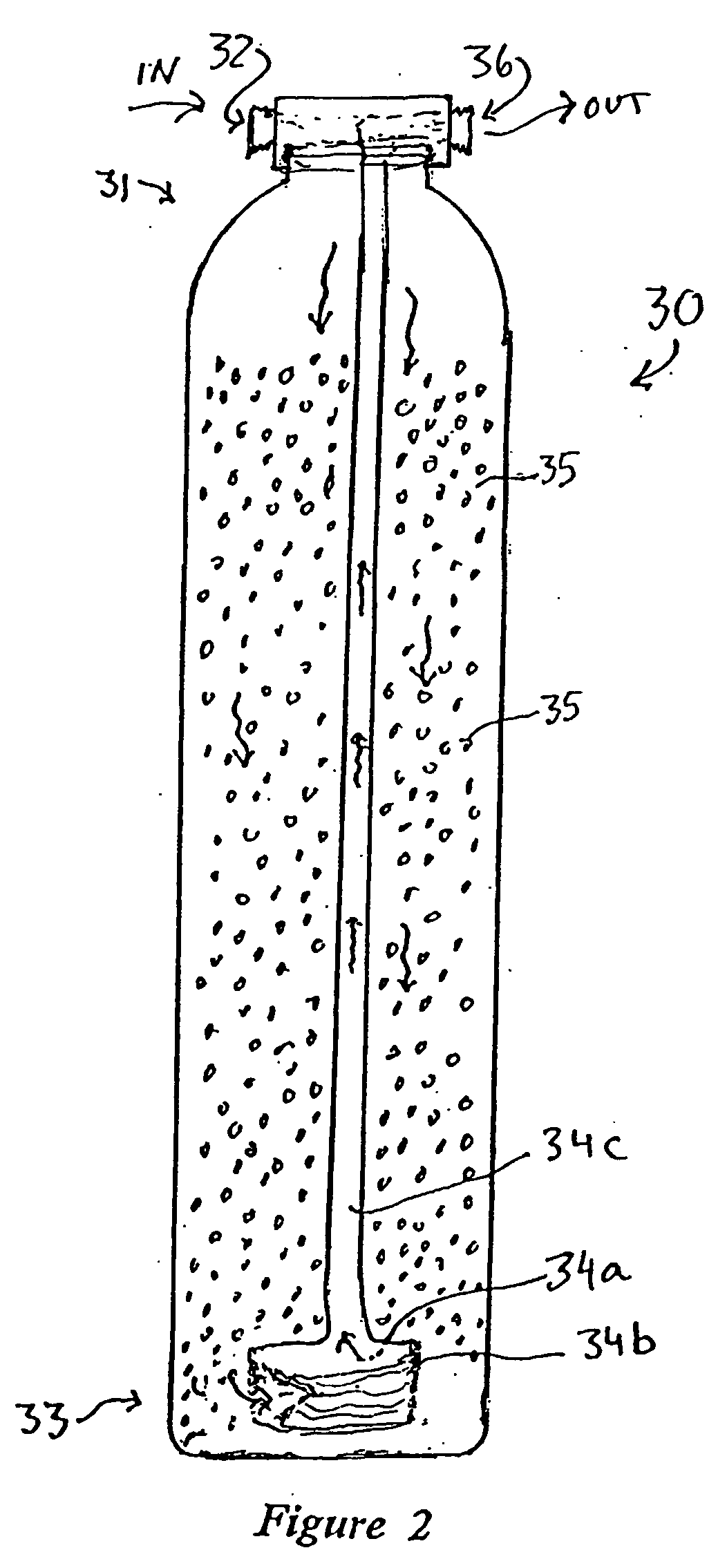Ion exchange regeneration and upw treatment system
a technology of ion exchange and upw treatment system, which is applied in the direction of water/sewage treatment by ion exchange, separation process, ion exchanger, etc., can solve the problems of presenting design problems of various types in the high-purity water system of the plant, and affecting the quality of the feed water
- Summary
- Abstract
- Description
- Claims
- Application Information
AI Technical Summary
Benefits of technology
Problems solved by technology
Method used
Image
Examples
Embodiment Construction
[0033]FIG. 1 schematically illustrates a water treatment plant 100, which may be conveniently viewed as a sequence of treatment or conditioning processes (not separately identified in the FIGURE) some in series and some in parallel that perform a pretreatment 10 followed by further treatment 20 to produce a product water substantially free of impurities, i.e., intrinsic water. The exact unit operations in treatment processes 10 and 20 may vary widely, depending upon the quality of the starting water or feed stream, and the desired quantity (recovery) and qualities of the high purity treated water, i.e., the product stream.
[0034] The pretreatment 10 may include processes that are carried out upstream in the supply, such as settling, flocculation and filtration to render the water suitable for later treatment stages, as well as processes such as sterilization, softening, pH adjustment or the like which may serve to address specific impurities or to enhance the stability, yield or ope...
PUM
| Property | Measurement | Unit |
|---|---|---|
| length | aaaaa | aaaaa |
| length | aaaaa | aaaaa |
| threshold | aaaaa | aaaaa |
Abstract
Description
Claims
Application Information
 Login to View More
Login to View More - R&D
- Intellectual Property
- Life Sciences
- Materials
- Tech Scout
- Unparalleled Data Quality
- Higher Quality Content
- 60% Fewer Hallucinations
Browse by: Latest US Patents, China's latest patents, Technical Efficacy Thesaurus, Application Domain, Technology Topic, Popular Technical Reports.
© 2025 PatSnap. All rights reserved.Legal|Privacy policy|Modern Slavery Act Transparency Statement|Sitemap|About US| Contact US: help@patsnap.com



